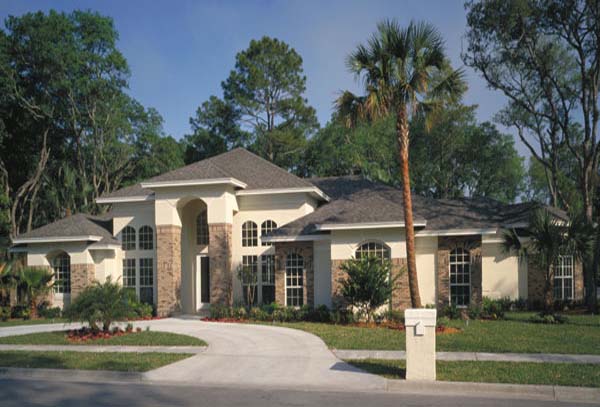Home > United Kingdom famous House > Claydon House
Claydon House
Claydon House - BuckinghamshireClaydon House is a magnificent country house located in Buckinghamshire, England. It is renowned for its unique architecture, rich history, and impressive interiors. In this essay, we will explore the captivating story of Claydon House, delving into its origins, architectural features, notable residents, and the treasures it holds within its walls.
It is fascinating to learn that there has been a manor on the site of the present home before the Norman conquest of England. The rich historical background of the property adds to its allure and heritage. Such historical continuity spanning many centuries can provide a sense of connection to the past and the evolution of the property over time. The existence of a manor on the site before the Norman conquest suggests a long-standing history and potentially ties to the Anglo-Saxon or earlier periods of English history. The manor system was prevalent in medieval England and represented the social and economic organization of the time. As the manor evolved and changed hands throughout the centuries, it is likely that the house underwent various modifications, expansions, or even complete rebuilds to adapt to the needs and architectural styles of different eras. This layered history can be intriguing for historians, archaeologists, and individuals interested in heritage properties. Exploring the historical records, architectural features, and potentially conducting archaeological investigations can shed further light on the specific details and significant events associated with the manor and its evolution over time. It is fascinating to uncover the stories and historical context that have shaped the present-day house and its surroundings.
The history of Claydon House can be traced back to the late 18th century when Ralph, 2nd Earl Verney, commissioned the construction of the house. The Earl was a prominent member of the Verney family, which had deep roots in the region and played a significant role in English history. Claydon House was intended to be a grand country retreat and a symbol of the family's wealth and status.
One of the most striking aspects of Claydon House is its architecture. The house showcases a captivating blend of architectural styles, combining elements of both Baroque and Rococo design. This unique fusion of styles sets Claydon House apart from other country houses of its time. The exterior features elegant red brickwork and an elaborate parapet adorned with decorative stone balustrades, giving the house a distinct and eye-catching appearance.
Upon entering Claydon House, visitors are greeted by a grand central hall that serves as the heart of the building. This hall, known as the Saloon, is a magnificent space with soaring ceilings and intricately carved woodwork. The Saloon is a testament to the craftsmanship and attention to detail that went into the construction of the house. It is adorned with exquisite plasterwork, gilded moldings, and elaborate chandeliers, creating an atmosphere of opulence and grandeur.
Throughout the house, each room offers a glimpse into the different periods and tastes of the Verney family. The Drawing Room, for instance, reflects the Victorian era with its richly patterned wallpaper, plush furnishings, and ornate fireplace. The Dining Room showcases a more classical style, with its elegant wood paneling and large dining table, while the Chinese Room features an eclectic mix of Chinese-inspired decor, reflecting the popularity of Orientalism during the 18th cent
One of the highlights of Claydon House is its extensive art collection. Over the centuries, the Verney family amassed a remarkable assortment of paintings, sculptures, and decorative art. The collection includes works by renowned artists such as Sir Joshua Reynolds, Thomas Gainsborough, and George Stubbs, among others. These artworks provide insights into the cultural and artistic interests of the Verney family, as well as the broader artistic trends of their time.
In addition to its art collection, Claydon House houses an impressive array of antique furniture and personal belongings of the Verney family. The rooms are filled with intricately carved cabinets, ornate mirrors, and luxurious upholstery, giving visitors a glimpse into the daily lives of the house's former inhabitants. These artifacts offer a tangible connection to the past and help preserve the heritage of the Verney family.
Beyond its architectural and artistic splendors, Claydon House has witnessed a fascinating history and has been home to several notable residents. The Verney family played an active role in political and social affairs, and their connections reached the highest echelons of society. Sir Edmund Verney, for instance, served as a loyal supporter of King Charles I during the English Civil War and was knighted for his efforts. The family's involvement in key historical events adds an additional layer of significance to Claydon House.
Despite its grandeur, Claydon House has faced challenges over the years. Financial difficulties and changing social circumstances led to periods of neglect and decline. However, thanks to the dedication of subsequent generations of the Verney family, the house was eventually restored and opened to the public in the 20th century. Today, it stands as a testament to their commitment to preserving their ancestral home and sharing its beauty with the world. In addition to the house itself, Claydon House boasts stunning gardens and parkland that surround the estate. The gardens have been carefully designed and landscaped, showcasing a harmonious blend of formal and informal elements. Visitors can explore the terraced gardens, admire the ornamental ponds, and wander through the enchanting woodland areas. The gardens offer breathtaking views of the surrounding countryside and provide a tranquil escape from the bustle of everyday life.
Claydon House is not only a place of historical and architectural significance but also a venue for cultural events and activities. The house hosts exhibitions, workshops, and performances, providing opportunities for visitors to engage with the arts and learn more about the history and heritage of the estate. These events contribute to the vibrant cultural scene in the region and help ensure the continued relevance of Claydon House in the modern era.
In conclusion, Claydon House is a captivating country house that weaves together history, architecture, art, and natural beauty. Its unique blend of architectural styles, impressive interiors, and extensive collections make it a treasure trove of cultural heritage. As visitors wander through its rooms, admire its art, and explore its gardens, they are transported back in time and gain a deeper appreciation for the lives of those who called Claydon House home. It stands as a testament to the enduring legacy of the Verney family and serves as a window into the rich tapestry of English history.
Middle Claydon Church
Middle Claydon Church, also known as All Saints' Church, is a historic place of worship located in the village of Middle Claydon, Buckinghamshire, England. This beautiful church, nestled amidst the rolling countryside, holds within its walls a rich history, stunning architectural features, and a sense of spiritual tranquility. In this essay, we will explore the origins, architecture, notable features, and cultural significance of Middle Claydon Church.
The remaining portion, known as the 'west wing,' suggests that the original structure was more extensive and likely had an identical twin wing. This twin wing would have contained the ballroom and other state apartments, indicating that the church had not only religious functions but also served as a gathering place for social and ceremonial events.
The origins of Middle Claydon Church can be traced back to the 13th century when the first church was constructed on the site. However, much of the current building dates back to the 15th century, with subsequent modifications and additions made over the centuries. The church is primarily built in the Perpendicular Gothic style, characterized by its emphasis on verticality, large windows, and intricate tracery.
One of the most notable architectural features of Middle Claydon Church is its tower. Rising above the surrounding landscape, the tower stands as a beacon of faith and a symbol of the church's presence within the community. It is constructed of local limestone and features a square plan, with four stages gradually diminishing in size as they ascend. The tower is topped with battlements and adorned with pinnacles, adding to its visual appeal and giving it a distinctive silhouette against the sky. Upon entering Middle Claydon Church, visitors are greeted by a nave that exudes a sense of simplicity and serenity. The nave is characterized by its lofty proportions, slender columns, and a beautiful hammerbeam roof adorned with carved wooden angels. The intricate craftsmanship and attention to detail in the roof add to the overall sense of sacredness and create a visually captivating space for worship.
The chancel of Middle Claydon Church is another architectural gem within the building. It is a narrower and more ornate space compared to the nave, housing the altar and choir stalls. The chancel is illuminated by large stained glass windows that depict biblical scenes and saints, filling the space with a soft, ethereal light. The combination of the richly decorated chancel and the simplicity of the nave creates a balance between opulence and humility, reflecting the spiritual aspirations of the church.
Middle Claydon Church is also notable for its collection of historic monuments and memorials. One of the most prominent is the Verney Chapel, located on the north side of the chancel. The Verney family, who were the lords of the manor of Middle Claydon, commissioned the chapel as a private place of worship and a burial site for their family members. The chapel features beautifully carved stone tombs, effigies, and memorial tablets that commemorate the lives of various Verney family members throughout the centuries.
One of the most striking monuments in the Verney Chapel is the tomb of Sir Edmund Verney, a notable figure in English history. Sir Edmund was a loyal supporter of King Charles I during the English Civil War and served as his standard-bearer. He lost his life in the Battle of Edgehill in 1642, and his tomb is a testament to his bravery and devotion to his cause. The tomb is intricately carved and features a recumbent effigy of Sir Edmund dressed in armor, capturing the essence of a valiant knight.
The church also houses a collection of beautiful stained glass windows that add to its visual splendor. These windows depict biblical scenes, saints, and heraldic symbols, offering glimpses into the rich religious and cultural heritage of the region. The vibrant colors and intricate details of the stained glass create an atmosphere of reverence and awe, transporting visitors into a world of spiritual contemplation. Beyond its architectural and artistic treasures, Middle Claydon Church holds a significant place in the cultural and social life of the community. It has been a place of worship, solace, and celebration for generations of villagers, providing a spiritual anchor and a gathering place for important life events. The church continues to hold regular services, weddings, and other religious ceremonies, connecting the past with the present and fostering a sense of continuity and community.
Middle Claydon Church, with its timeless beauty and historical significance, is not just a physical structure but a repository of stories, memories, and traditions. It stands as a testament to the faith, creativity, and craftsmanship of those who built it and a testament to the enduring power of spirituality. As visitors enter its sacred space, they are enveloped in an atmosphere of peace and reverence, connecting with centuries of worship and contemplation. Middle Claydon Church truly represents the rich tapestry of human history, spirituality, and cultural heritage.










